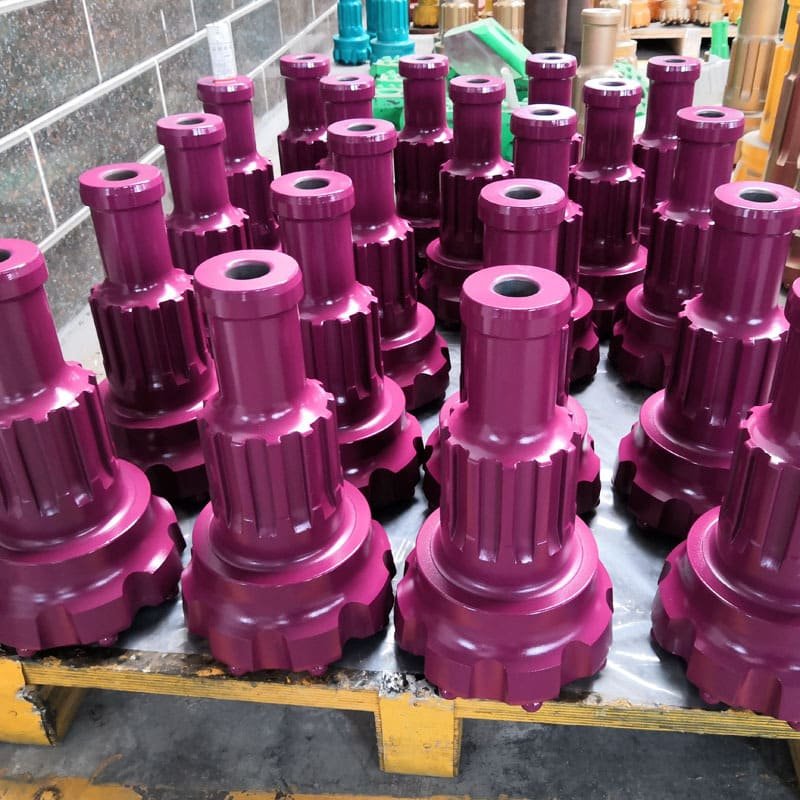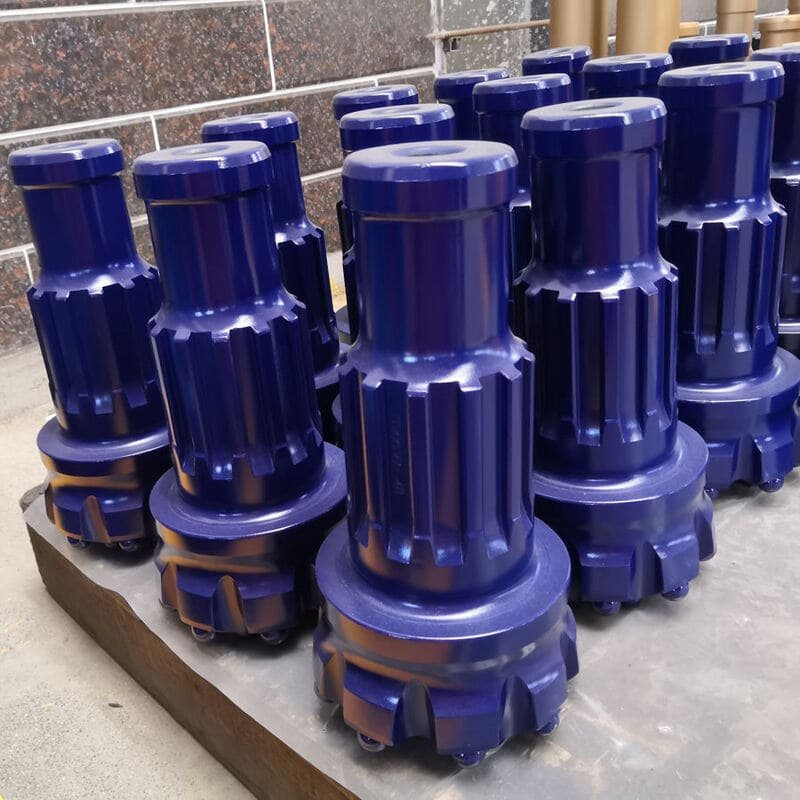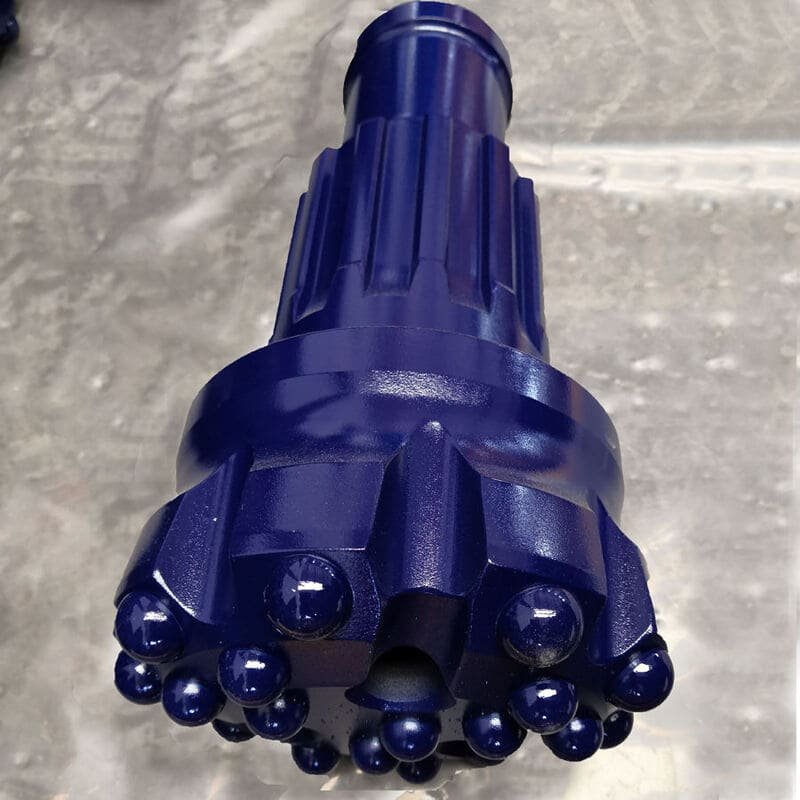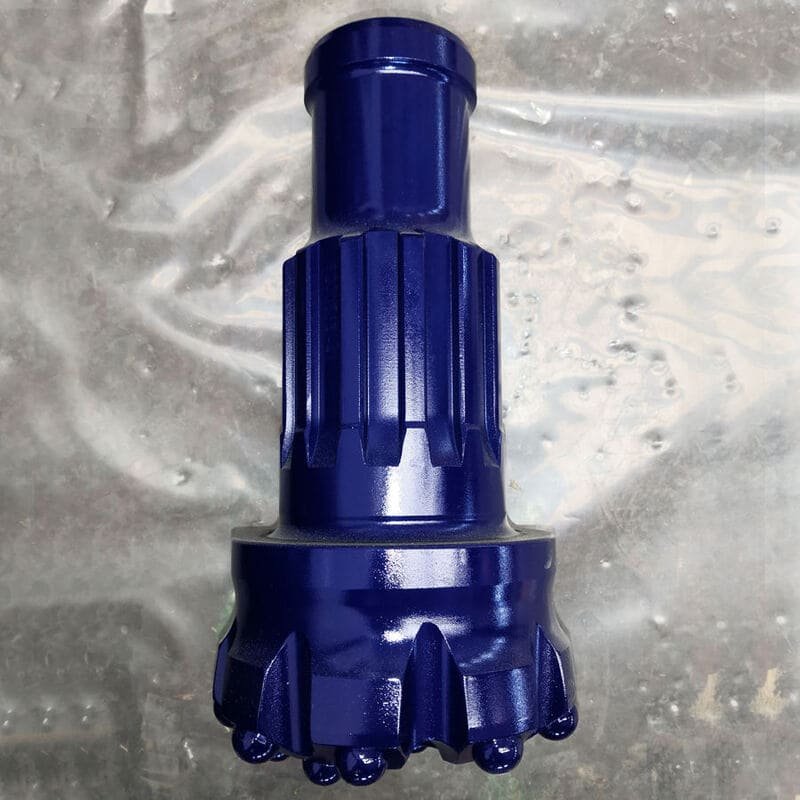Have you ever stood in front of a row of DTH drill bits, unsure which size fits your project best?
DTH drill bits vary in size. They range from 2 inches (51 mm) to 42 inches (1067 mm) wide. Different sizes are suitable for different jobs. Industries like construction and mining use them a lot. It is really helpful to understand these choices. This knowledge allows you to choose the right bit for your specific project.
I remember my first large drilling project. The options for drill bit sizes were overwhelming. It felt like being in a candy store but much more serious. Knowing how each size works for different drilling situations gave me confidence. It saved a lot of time and resources. Let's explore the details of each size category. Other important factors, too, are crucial for your project's success.
DTH drill bits range from 2 to 42 inches in diameter.True
DTH drill bits are available from 2 inches (51 mm) to 42 inches (1067 mm).
Extra large DTH bits are over 36 inches in diameter.True
Extra large DTH drill bits can be up to 42 inches (1067 mm).
How to Choose the Right Diameter for Your Project?
Have you ever thought about how the right diameter could really help your project? I have experienced this and it's more than just about numbers!
To find the right diameter for your project, look at its specific needs. Consider factors like how much weight it must hold and the weather it will face. Use tools and follow industry rules to get the correct fit. Sometimes changes are necessary because of the project's size and cost. This is important for good results.

Understanding Project Needs
I remember my first time picking a diameter for a project. I felt lost with all the technical words. Then I saw it was really about understanding what the project needed. You need to know the load the structure carries, how materials behave, and the environment. For example, in one construction job, the load capacity1 determined our diameter choice. This kept our structure stable.
Checking Industry Rules
Industry rules might feel scary, but they really help. They guide you to keep things safe. My first time looking at ASTM or ISO docs felt like cracking a code. Yet, they helped me match my work to common standards. This brought me peace, knowing my decisions were sound. Checking diameter specifications2 guides became a must for my projects.
Using Sizing Tools
Online calculators are like magic. They give you exact measurements and saved me lots of calculation time. By entering basic details, these tools offer quick estimates. Precision is key in engineering; therefore, using project sizing calculators3 is essential as they changed my work approach.
Considering Costs
Balancing costs and performance is tricky. Bigger diameters might seem better, but they cost more. I learned this when I overspent on a project before. Now, I weigh costs carefully to find a cost-effective diameter4. It must not lower quality or safety.
Adapting to the Environment
Once, I ignored weather in a project and paid for it! The project was delayed because material failed under unexpected weather conditions. Now, I always check environmental factors such as temperature fluctuations, humidity, and exposure to chemicals are on my list to ensure materials fit the conditions by researching material compatibility5. Research saves my projects from problems.
DTH drill bits range from 2 to 42 inches in diameter.True
DTH drill bits are available in diameters from 2 inches to 42 inches.
All DTH drill bits are suitable for water well drilling.False
Not all DTH drill bits suit water well drilling; size matters.
How Do You Choose Between Small, Medium, and Large Diameter Drill Bits?
Is choosing the correct drill bit size confusing for you? Let's find the perfect size.
Picking drill bits with small, medium or large diameters depends on what you need for your task. Small bits give precision. Medium bits offer variety. Large bits work for heavy tasks. Each size affects speed, accuracy and what material you can use differently.

The Precision of Small Diameter Bits
I recall my first try at a delicate wooden jewelry box for my niece. I wanted to get every detail perfect. Small diameter bits, typically ranging from 2 to 4 inches, helped me a lot. They are designed for precision and accuracy, excelling in applications where fine details are essential, such as intricate woodworking or detailed metalwork. These bits allow for greater control and fit well in tight spaces. However, they may not be suitable for cutting through thick or dense materials due to their smaller size and reduced power.
Versatility with Medium Diameter Bits
Once, I helped a friend with their kitchen renovation. We needed a bit that handled different tasks. Medium diameter bits span from 4 to 12 inches and offer a balance between precision and power. These bits solved the problem by being versatile enough to handle a wide range of tasks, from general construction to medium-scale mining operations. They strike a middle ground, providing enough power to penetrate tougher materials while maintaining a level of precision that larger bits may lack. This makes them ideal for multi-purpose drilling6 needs.
Power and Reach of Large Diameter Bits
Don't forget the big backyard project when I wanted to build a gazebo. I needed something strong - large diameter bits measuring from 12 to 36 inches were perfect for this task. Built for heavy-duty tasks like mining and construction where deep penetration into hard substrates is required, these bits offer significant power and speed but may sacrifice some precision due to their size. Using large diameter bits often requires specialized equipment and expertise to manage the increased forces involved.
When picking bit sizes, match them to your project's needs. Each size has its benefits and limitations7. Small bits suit details but not big jobs; large bits might overwhelm delicate tasks. Understanding these differences helps ensure the success of your drilling endeavors.
DTH bits over 42 inches are called Extra Large.False
Extra Large DTH bits are up to 42 inches, not over 42 inches.
Medium DTH bits range from 4 to 12 inches.True
Medium diameter DTH bits are specified as ranging from 4 to 12 inches.
How Do Geological Conditions Influence My DTH Drill Bit Choice?
Have you ever looked at a heap of stones, pondering which drill bit to use? I’ve experienced that too. Believe me, picking the correct one is crucial. It could really affect your project.
Geological conditions dictate the choice of DTH drill bits. The type, size and material of the drill bit depend on these conditions. Hard rocks require very strong and durable bits. Softer rocks need more flexible options. A good choice increases efficiency. A correct selection reduces wear.

Understanding Geological Conditions
Working with DTH drill bits was like learning a new language. Different geological conditions felt like unique voices to the bits. Things like rock type, rock hardness, soil makeup, moisture, and abrasiveness formed this language. Granite is a tough rock and needs very strong tungsten carbide bits due to its superior hardness and durability.
Impact of Rock Hardness
I had a job in a limestone quarry once. Using a high-strength bit was like using a sledgehammer on glass; it just failed. For soft rocks such as limestone, softer bits with higher penetration rates work better to avoid unnecessary wear. They stop bits from wearing out too fast. Conversely, hard rocks need strong bits to withstand the greater force required. Robust bits are essential to handle the stress and prevent premature wear8 and operational inefficiencies.
Abrasive Nature of Geological Formations
Very abrasive ground is a bad enemy. Bits can wear out fast if the soil is unexpectedly abrasive. Therefore, choosing reinforced bits with diamond segments or similar technologies helps significantly in these tough conditions.
Influence of Moisture Content
Wet conditions make drilling messy. Moisture affects bit performance by altering the material's interaction with the bit. Bits designed for better water evacuation and reduced clogging are very useful in wet environments. Consistent performance is crucial to avoid operational delays9 caused by clogging or binding.
Customizing Bit Design for Specific Conditions
Changing bit design features can really help performance. Design features such as button shape, face design, and flushing holes can be tailored to suit different geological conditions. Bits with good flushing systems work well in fractured rock formations as they clear debris effectively, improving speed and accuracy.
Understanding these factors helps in choosing the right DTH drill bit strategically rather than randomly selecting one. Sometimes talking to experts10 or manufacturers is helpful as they provide advice tailored for unique projects.
DTH drill bits are only used in mining operations.False
DTH drill bits are used in mining, construction, and water well drilling.
Extra large DTH bits exceed 42 inches in diameter.False
Extra large DTH bits can be up to 42 inches (1067 mm) in diameter.
What Are the Latest Innovations in DTH Drill Bit Technology?
Do you ever think about what is behind the latest excitement in DTH drill bit technology? I will guide you through new ideas changing the way we drill.
The newest DTH drill bits use advanced materials such as polycrystalline diamond. These tools show modern hydraulic designs and smart sensors. They increase drilling speed. They also reduce time lost and offer real-time tracking. Drilling becomes more efficient. Costs go down in different soil and rock types.

New Materials Transforming Drill Bits
When I started learning about DTH drill bits, I felt amazed by the leap from using just tungsten carbide. Now, materials like polycrystalline diamond (PCD) grab attention. These advancements are truly revolutionary, especially in tough rock drilling. Drilling with bits that last much longer and cut faster feels like trading a regular car for a high-speed sports car. This shift really saves money on replacements and helps meet project deadlines reliably. Meeting deadlines is important.
By utilizing advanced material technology11, companies can decrease operational costs and improve project timelines.
Better Hydraulic Designs
I recall a project where dense rock drilling was like trying to cut through steel with a butter knife. Therefore, the improved hydraulic designs of today's drill bits are exciting. They allow smoother removal of debris, reducing the risk of getting stuck during operations—getting stuck is a nightmare. Lower vibration and noise levels bring great comfort, which is crucial in sensitive environments where peace is necessary during drilling.
Enhanced hydraulic designs12 enable operators to tackle diverse geological formations with greater efficiency and reduced wear on equipment.
Using Smart Technology
The use of smart technology in drill bits seemed like science fiction. Now, sensor-equipped bits offering real-time data feel incredibly helpful—like being guided by a personal assistant. Monitoring temperature, pressure, and vibration lets me stay proactive; this helps prevent costly downtimes and maintains safety.
These smart solutions have really changed my method for handling projects as I adjust settings on the go for better performance.
Such innovations are paving the way for smart drilling solutions13 that enhance safety and productivity across the board.
These advancements reflect a move towards smarter drilling technologies. As resource needs grow, I believe these innovations will tackle the industry's new challenges effectively.
DTH bits range from 2 to 42 inches in diameter.True
DTH drill bits are available in sizes from 2 inches to 42 inches.
Extra large DTH bits are over 50 inches in diameter.False
Extra large DTH bits reach up to 42 inches, not over 50 inches.
Conclusion
DTH drill bits range from 2 to 42 inches in diameter, catering to various drilling needs across industries like construction and mining. Choosing the right size is crucial for project success.
-
Understand how load capacity affects diameter selection. ↩
-
Explore industry standards for reliable diameter specifications. ↩
-
Discover tools for efficient diameter calculation. ↩
-
Learn ways to balance cost with performance needs. ↩
-
Ensure materials suit specific environmental factors. ↩
-
Discover how medium diameter bits serve multi-purpose drilling needs effectively. ↩
-
Learn about the pros and cons of various drill bit sizes. ↩
-
Learn how rock hardness influences drill bit wear and longevity. ↩
-
Discover how moisture affects drill bit efficiency and operation. ↩
-
Find experts for tailored DTH drill bit solutions. ↩
-
Discover how PCD enhances durability and cutting efficiency. ↩
-
Learn about fluid dynamics optimizing bit performance. ↩
-
Explore benefits of real-time data for drilling optimization. ↩








